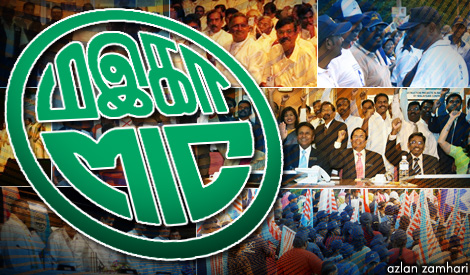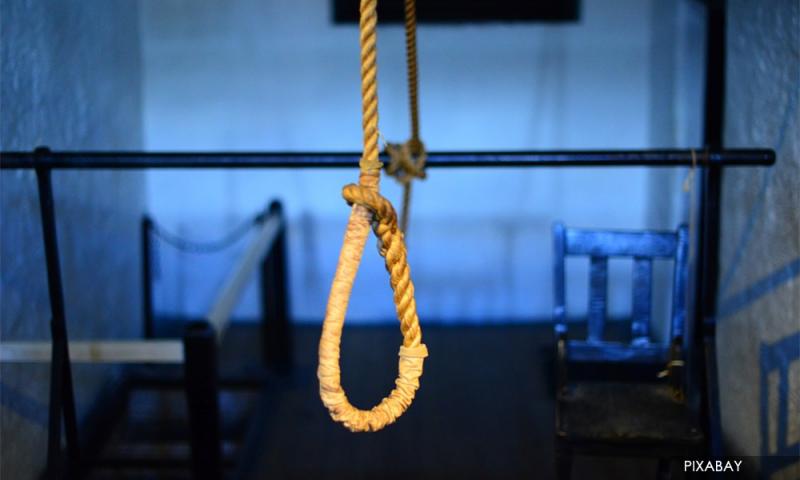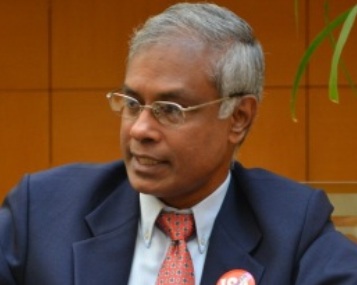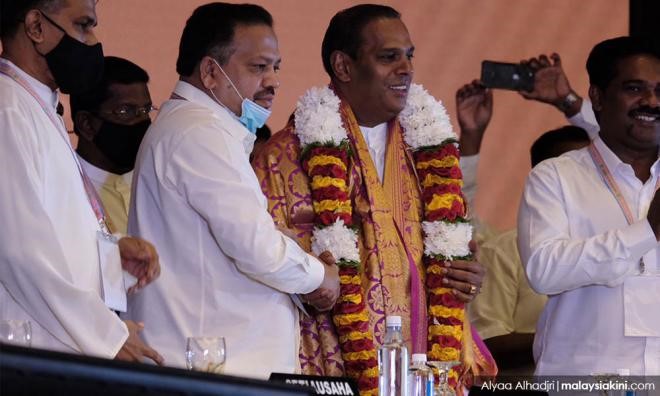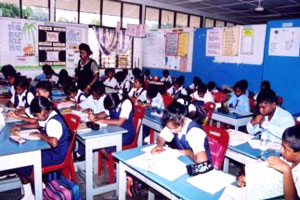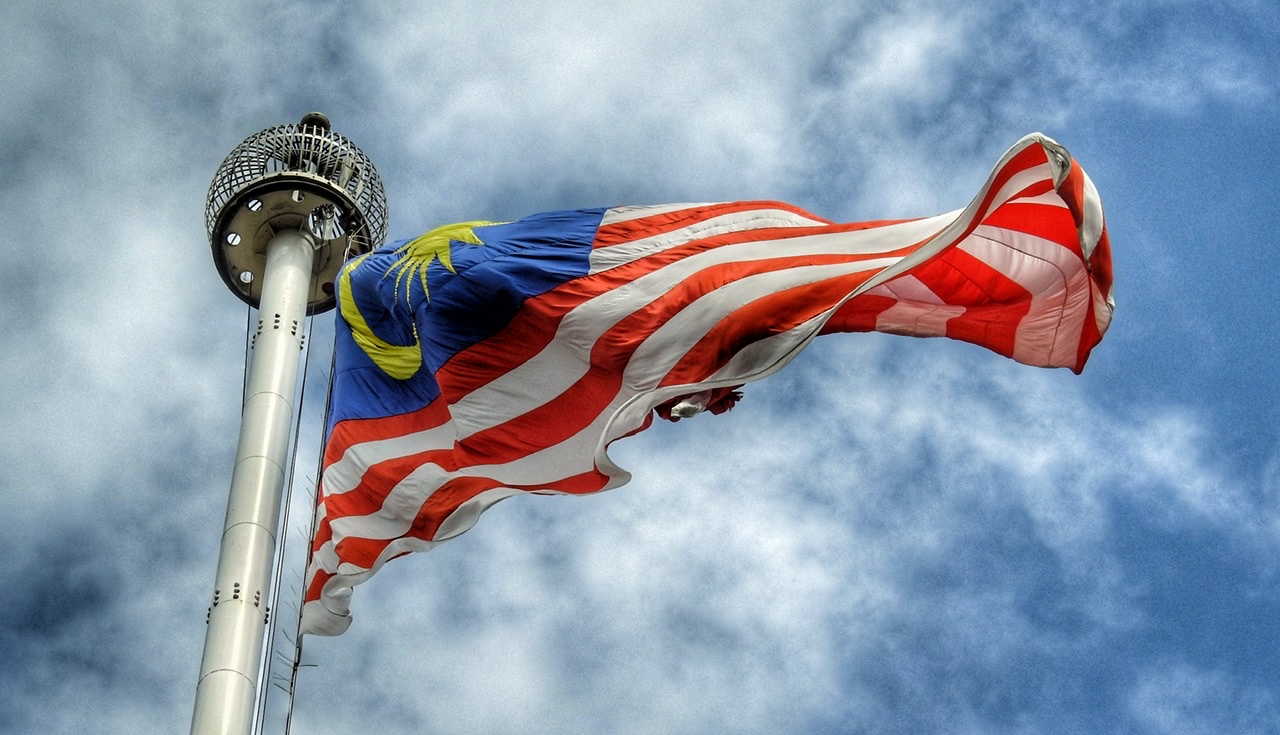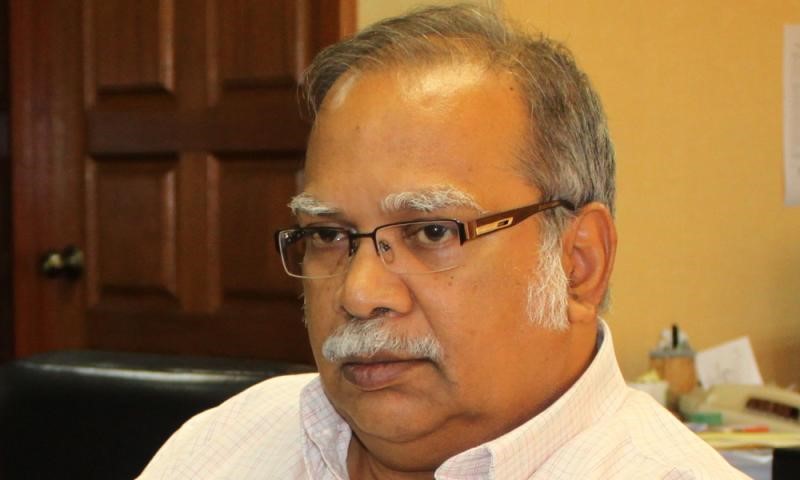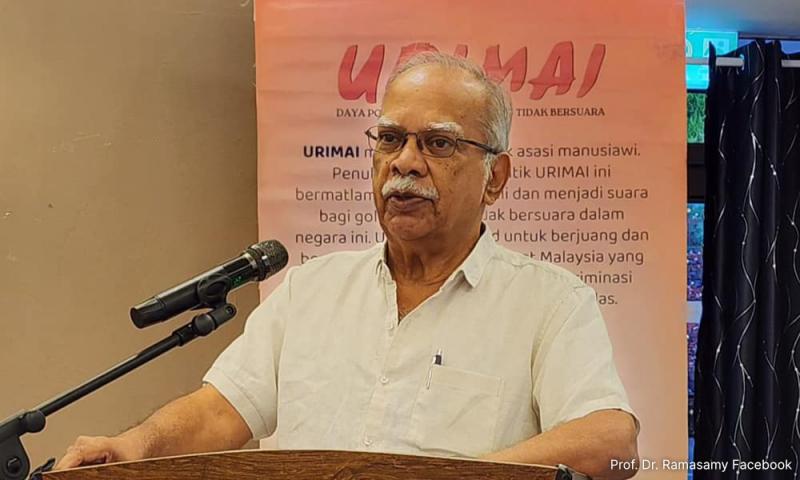-Kua Kia Soong, August 31, 2016.
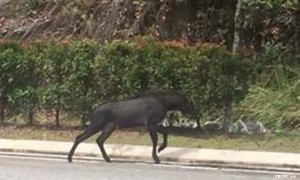 In 2008, in a knee-jerk reaction to the Bukit Antarabangsa tragedy, then-menteri besar Khalid Ibrahim issued a blanket ban on development in Class Three and Four slopes. These two categories refer to slopes with steep inclines of more than 20 degrees. He said the state government would blacklist developers and companies that failed to adhere to its directives and was even prepared to face the legal consequences of stopping the projects.
In 2008, in a knee-jerk reaction to the Bukit Antarabangsa tragedy, then-menteri besar Khalid Ibrahim issued a blanket ban on development in Class Three and Four slopes. These two categories refer to slopes with steep inclines of more than 20 degrees. He said the state government would blacklist developers and companies that failed to adhere to its directives and was even prepared to face the legal consequences of stopping the projects.
Our last green lung has just been destroyed
Residents in our housing estate, Taman Cuepacs Fasa I, Cheras came out in force last week to protest the destruction of our last green lung, a forested hill of more than 50 degrees gradient on our eastern flank for a new development project to build three-story bungalows on this slope.
Our prized green lung, the Bukit Sungai Putih permanent forest reserve that was gazetted in 1932 by the colonial government but degazetted in 1992 by MB Muhammad Taib, was already destroyed more than 10 years ago by housing developers.
Our forested hill and the Bukit Sungai Putih forest have been a green environmental feature of Taman Cuepacs Fasa I ever since the housing was first conceived more than 35 years ago and was a reason residents chose to live in this taman. Apart from contributing to the cooling effect on our entire taman, the forest is frequented by exotic birds and mammals.
With the forest on this >50 degree gradient, we did not expect the Kajang Municipal Council could possibly approve any housing project on such a slope since there is a blanket ban on such development by the Selangor state government. The federal and state governments have ceaselessly urged Malaysians to preserve our trees and protect our green environment but all this has been shown to be phoney hot air.
MACC should investigate ‘tree-cutting scams’
Apart from this rude violation of the green policy in our taman, we notice that as is also happening elsewhere in Malaysia, old trees are being slaughtered by the local authorities which leaves us physically ill and wondering when something drastic is going to happen to stop this tree-cutting scam. Some of the most beautiful features of Malaysian towns and villages are our heritage banyan trees and even these are being slaughtered.
The excuse for cutting the trees is invariably that they are diseased and this is a way to prevent contamination. We have heard this before. Some time ago, our residents association had asked the local Kajang Municipal Council to prune the trees around the only playground in our taman. They replied by suggesting that we cut down all the trees instead. We of course said “No way”.
Soon after, the council came to cut down ALL the trees around the playground that were at least 40 years old. Their excuse was that the trees were diseased.
Why are the councils so fond of such chainsaw massacres? Have you noticed the many ‘Nak potong pokok’ signs on telephone poles all over the place? Do you know that it costs a few thousand bucks to take down an imperious banyan tree!
The Forest Research Institute of Malaysia should step in to affirm if all these trees that have been cut down in many towns and cities in Malaysia have indeed been stricken by some form of tree-inflicting disease. State governments throughout Malaysia should record how many trees have been cut and the amount of money spent by municipal councils on tree cutting contracts.
The Malaysian Anti-Corruption Commission (MACC) should investigate if there are favoured contractors who are given the bulk of these contracts.
Sacrificing our forests for highways
The Selangor state government has proposed to degazette 106.65 hectares of four forest reserves that form part of the Selangor State Park for the construction of The Kuala Lumpur Outer Ring Road (KLORR), also known as the East Klang Valley Expressway (EKVE).
By degazetting the Ulu Langat Forest Reserve, Bukit Sungei Puteh Forest Reserve, Ampang Forest Reserve, and Ulu Gombak Forest Reserve, these forests will lose their ‘forest reserve’ status and will be fair game for developers.
The Selangor State Park happens to be the third largest park in peninsular Malaysia. It was gazetted in 2007 as a state park under the National Forestry Act Enactment 2005 of Selangor and is managed by the Forestry Department of Selangor. These forests are not only rich in biodiversity but provide crucial water catchments for the people of Selangor.
It is the height of irresponsibility by the Selangor state government that the proposal to degazette crucial water catchment forests should come at a time when water shortages have reached a critical stage in different parts of the Klang Valley and water levels in Selangor dams are prone to diminishing.
Having put up with decades of BN wanton destruction of the environment in the name of ‘development’, we expect a more principled stand from Pakatan Harapan beyond pious rhetoric. It is ironic that we should have to lobby the Selangor state government to preserve the state park. One would have expected the politicians who have pledged to defend the Malaysian environment to refuse to degazette any part of Selangor’s gazetted forests for a highway.
Having campaigned against the ‘development’ of a sizeable portion of Bukit Sungai Putih Permanent Forest Reserve in the late nineties, the result is evident for all to see today – rampant housing development with more and more encroachments into the forest. An important water catchment, never mind irreplaceable flora and fauna, has been lost forever to the Klang Valley people.
Any highway built through these precious natural resources will affect the function of the forest reserve as a water catchment. With easy access to the forest reserve, illegal encroachment into the forests will take place, as is evident elsewhere in Malaysia with our lax enforcement. Easy access will also make it more attractive for so-called ‘development’ in the future, resulting in even more forests being cleared and more water catchment polluted or lost.
Loss of forests will not only exacerbate the water crisis but will also cause more flash floods and landslides. The highway will also fragment the forest, making it difficult for wildlife to get from one part of the forest patch to another. Living on the edge of the Bukit Sungai Putih forest, we witness the plight of dusky leaf monkeys and other primates which have been marooned in the small patches of forest cut off from the main forest.
During the eighties, a serow (a very rare mammal) was found in a drain just outside this forest because it had been forced out of its restricted habitat.
We need good public transport, not highways.
In recent years, residents in the Klang Valley have seen the rampant building of highways which have accompanied the national car project. In other environmentally conscious cities, there would have been protests over their indiscriminate construction with no heed for the environment, aesthetics or the people’s right to the commons and public footpaths.
The authorities seem to have taken Malaysians’ patience for granted in now pushing for this highway that will desecrate the Selangor state park.
A sustainable solution that ensures both the preservation of Malaysian nature and enables ease of mobility for majority of urban dwellers lies in creating an effective integrated public transport system, and not endless highways and tunnels.
DR KUA KIA SOONG is Suaram adviser.


